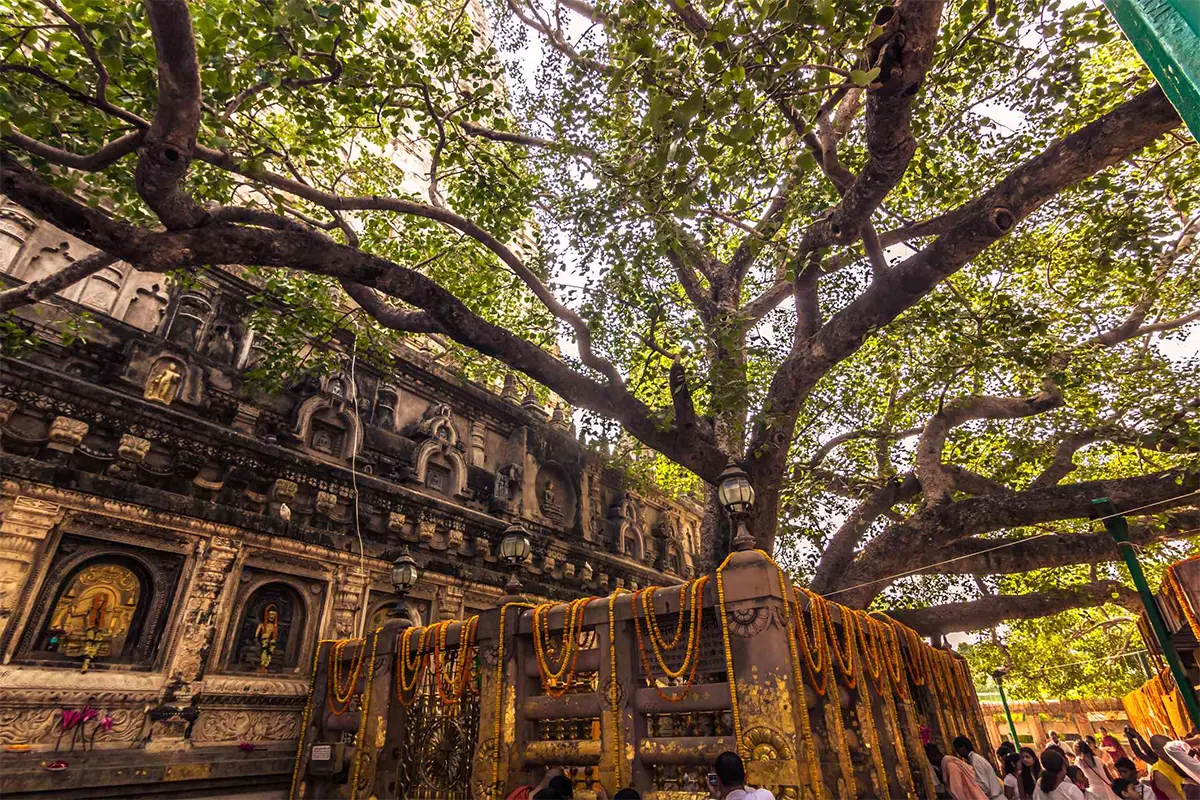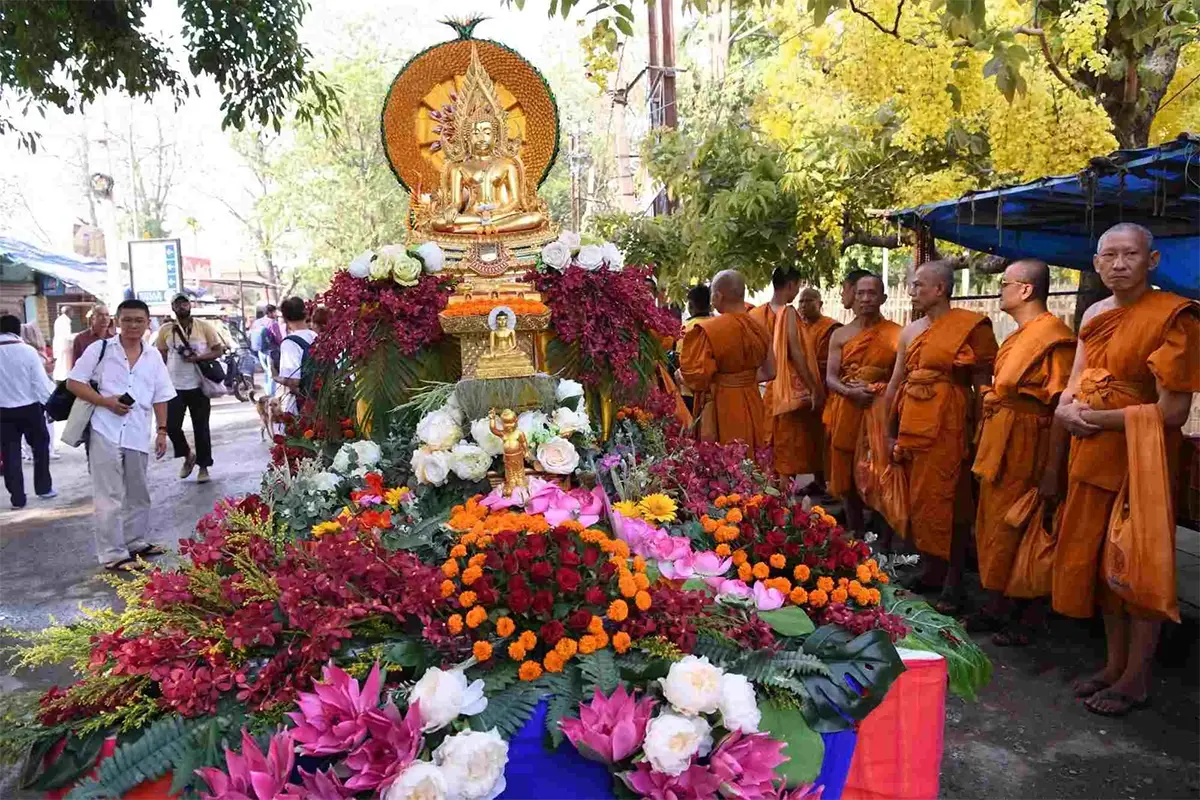Nestled in the heart of Bihar, India, Bodh Gaya stands as one of the most revered pilgrimage destinations for Buddhists across the globe. It is here, under the sacred Bodhi Tree, that Prince Siddhartha Gautama attained supreme enlightenment and became the Buddha over 2,500 years ago. Today, Bodh Gaya is not only a place of immense historical importance but also a spiritual haven where peace seekers come to meditate, reflect, and connect with the roots of Buddhism.
Where Did Buddha Attain Enlightenment?

According to ancient texts, Siddhartha Gautama meditated under a pipal tree on the banks of the Falgu River. After days of deep meditation, he reached nirvana, understanding the truth of human existence and the path to liberation from suffering. This moment of awakening transformed him into the Enlightened One — the Buddha. The spot where this occurred is now marked by the Mahabodhi Temple Complex, with the Bodhi Tree still growing as a direct descendant of the original.
The Mahabodhi Temple Complex – Heart of Bodh Gaya
At the spiritual center of Bodh Gaya pilgrimage is the Mahabodhi Temple, a UNESCO World Heritage Site. With its striking pyramid-shaped structure, the temple is a marvel of ancient Indian architecture. Inside, it enshrines a large gilded statue of Buddha in the meditation pose. Just behind the temple stands the Bodhi Tree, where thousands of pilgrims gather daily to chant, meditate, and offer prayers.
The air around the temple resonates with the hum of mantras, the scent of incense, and the soft footsteps of monks in saffron robes. Visitors from around the world come to experience this deep spiritual energy and join the global Buddhist community in peaceful contemplation.
Pilgrimage to Bodh Gaya – A Journey of Faith
For Buddhists, visiting Bodh Gaya is not just a travel experience — it’s a spiritual journey. Whether you are a practicing Buddhist or a curious traveler, the serenity of this place invites you into moments of inner silence and awareness.

Many renowned spiritual leaders have walked the path to Bodh Gaya, including His Holiness the Dalai Lama, who often conducts teachings and Kalachakra initiations here. Walking the sacred grounds, especially during key festivals like Buddha Jayanti, offers a transformative experience.
How to Get to Bodh Gaya
Reaching Bodh Gaya is relatively easy for both domestic and international visitors:
- By air: The nearest airport is Gaya International Airport (GAY), with seasonal flights from major cities and countries.
- By train: Gaya Junction connects to Delhi, Kolkata, and other major cities.
- By road: Buses and taxis are available from Patna (around 110 km away).
Once in town, rickshaws and bicycles are common for short distances.
Places to Visit in Bodh Gaya Besides Mahabodhi Temple
Though the Mahabodhi Temple is the highlight, there are many other sacred and cultural attractions in Bodh Gaya:
- The Great Buddha Statue – A 25-meter stone statue that symbolizes peace and unity.
- Sujata Kuti – A memorial to the village woman who offered milk-rice to Siddhartha before his enlightenment.
- Dungeshwari Caves – Where the Buddha practiced extreme asceticism before finding the Middle Path.
- International Monasteries – Thai, Tibetan, Japanese, Vietnamese, and Bhutanese monasteries offer a glimpse into global Buddhist traditions.
- Bodh Gaya Museum – Showcasing ancient relics and artifacts from Buddhist history.
Best Time to Visit Bodh Gaya

The ideal time for a Bodh Gaya pilgrimage is from October to March, when the weather is cooler and many important events are held:
- Buddha Jayanti (April-May): Celebrates the birth, enlightenment, and death of the Buddha.
- Kalachakra Puja (occasionally held): A large gathering led by the Dalai Lama or other Tibetan masters.
- December–January: Peak pilgrimage season with international retreats and teachings.
Avoid visiting during the peak summer months (April–June) due to extreme heat.
Bodh Gaya Travel Guide: Tips for Visitors
- Where to stay: Choose from simple guesthouses to upscale hotels. Many monasteries also offer accommodation.
- Where to eat: Vegetarian food is widely available, with Indian, Tibetan, Thai, and continental options.
- Etiquette: Dress modestly, speak softly, and remove shoes before entering temples.
- Language: Hindi and English are widely spoken; monks from international monasteries may speak other languages.
For a more immersive experience, consider joining a guided meditation retreat or attending a Dharma talk.
The Legacy of Enlightenment – Bodh Gaya in Modern Times
Bodh Gaya is not just a place of the past — it remains a living center of spiritual inspiration. It attracts mindfulness practitioners, scholars, and seekers from every corner of the world. The efforts to preserve its temples and expand its cultural outreach continue to grow, making Bodh Gaya a global beacon for peace and compassion.
Conclusion
Whether you’re a pilgrim, a student of Buddhism, or simply in search of spiritual clarity, a journey to Bodh Gaya offers something timeless — the opportunity to stand in the very place where enlightenment was achieved. More than just a destination, Bodh Gaya is a doorway to understanding the self and the world more deeply.
Start your pilgrimage to Bodh Gaya today — and walk the path of awakening.
1 comment
[…] Read more: Bodh Gaya – The Sacred Place Where Buddha Attained Enlightenment […]